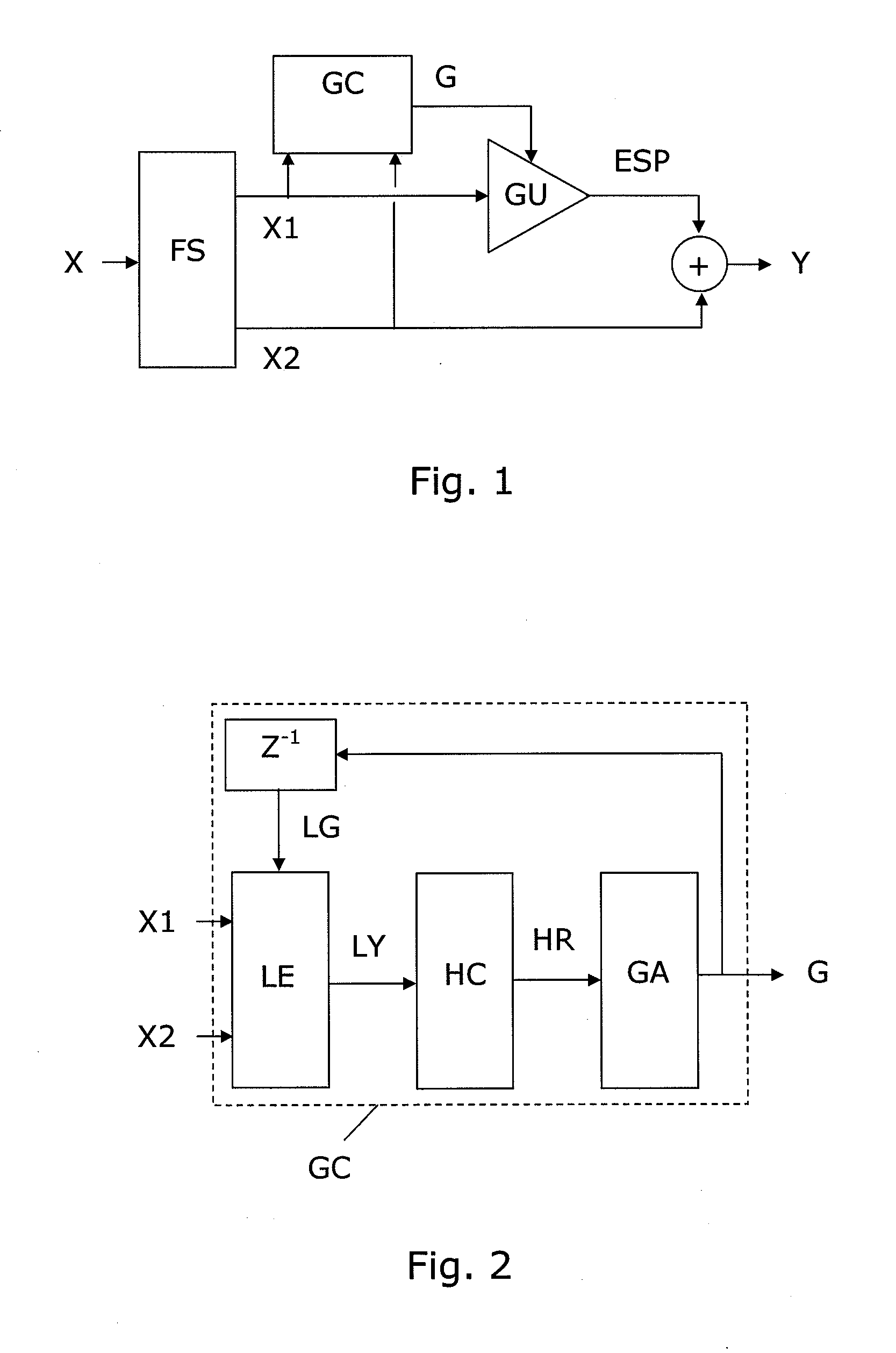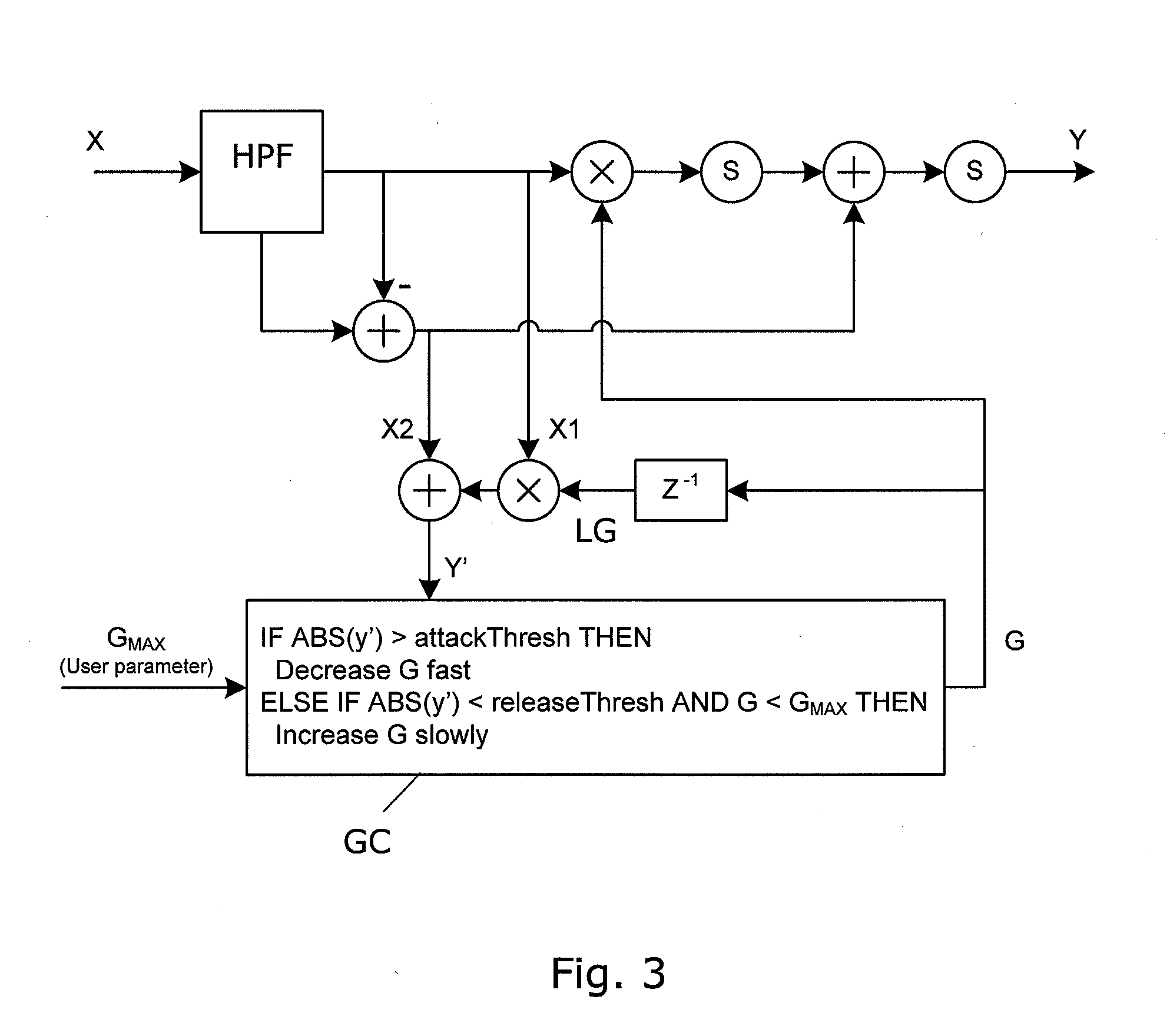Dynamic enhancement of audio signals
a technology of dynamic enhancement and audio signals, applied in the field of signal processing, can solve the problems of limited dynamic range, excessive distortion or even damage of electro-dynamic systems with a very limited dynamic range, and loudspeakers often have a limited maximum acoustic output, etc., and achieve the effect of severely affecting sound quality and limited dynamic capability
- Summary
- Abstract
- Description
- Claims
- Application Information
AI Technical Summary
Benefits of technology
Problems solved by technology
Method used
Image
Examples
Embodiment Construction
[0049]In the following, preferred audio processor embodiments are illustrated in block diagram form. It is to be understood that the blocks serve to illustrate functional elements of the audio processor rather than illustrating implementation specific parts of an algorithm suited for efficient execution on a signal processor. Thus, in a practical implementation, some of the illustrated blocks may advantageously be integrated into one single program element, such as the algorithm being re-written to combine two gain units into one etc.
[0050]FIG. 1 illustrates an overall block diagram of an audio processor embodiment receiving an audio input signal X, e.g. in digital form such as a PCM signal. The input signal X is split into two frequency bands in a frequency splitter FS, e.g. by a set of a high pass and a low pass filter, or by appropriate signal manipulation using only one single filter. The resulting two signal parts X1, X2 are then applied to a gain calculator that calculated an ...
PUM
 Login to View More
Login to View More Abstract
Description
Claims
Application Information
 Login to View More
Login to View More - R&D
- Intellectual Property
- Life Sciences
- Materials
- Tech Scout
- Unparalleled Data Quality
- Higher Quality Content
- 60% Fewer Hallucinations
Browse by: Latest US Patents, China's latest patents, Technical Efficacy Thesaurus, Application Domain, Technology Topic, Popular Technical Reports.
© 2025 PatSnap. All rights reserved.Legal|Privacy policy|Modern Slavery Act Transparency Statement|Sitemap|About US| Contact US: help@patsnap.com



